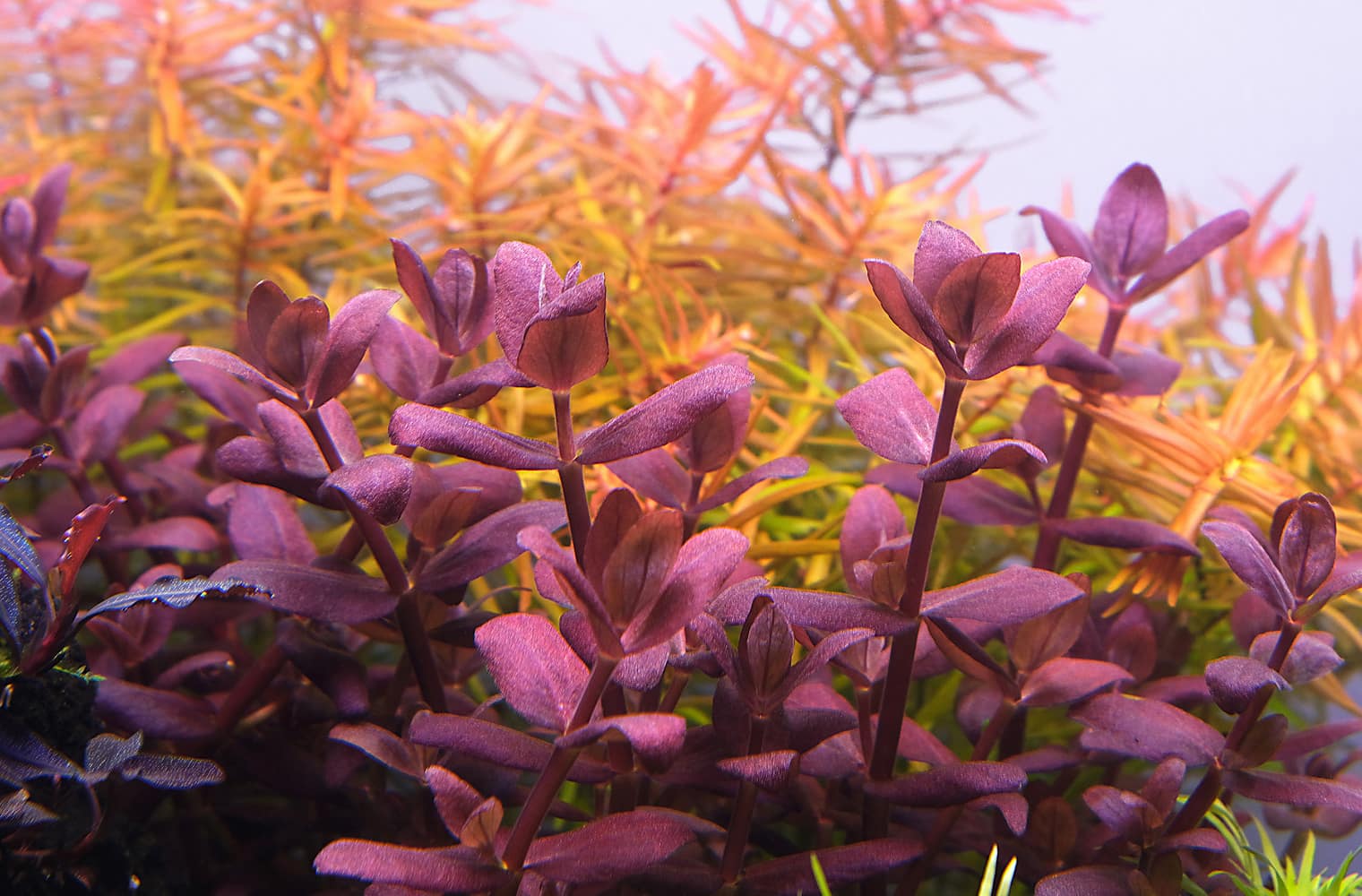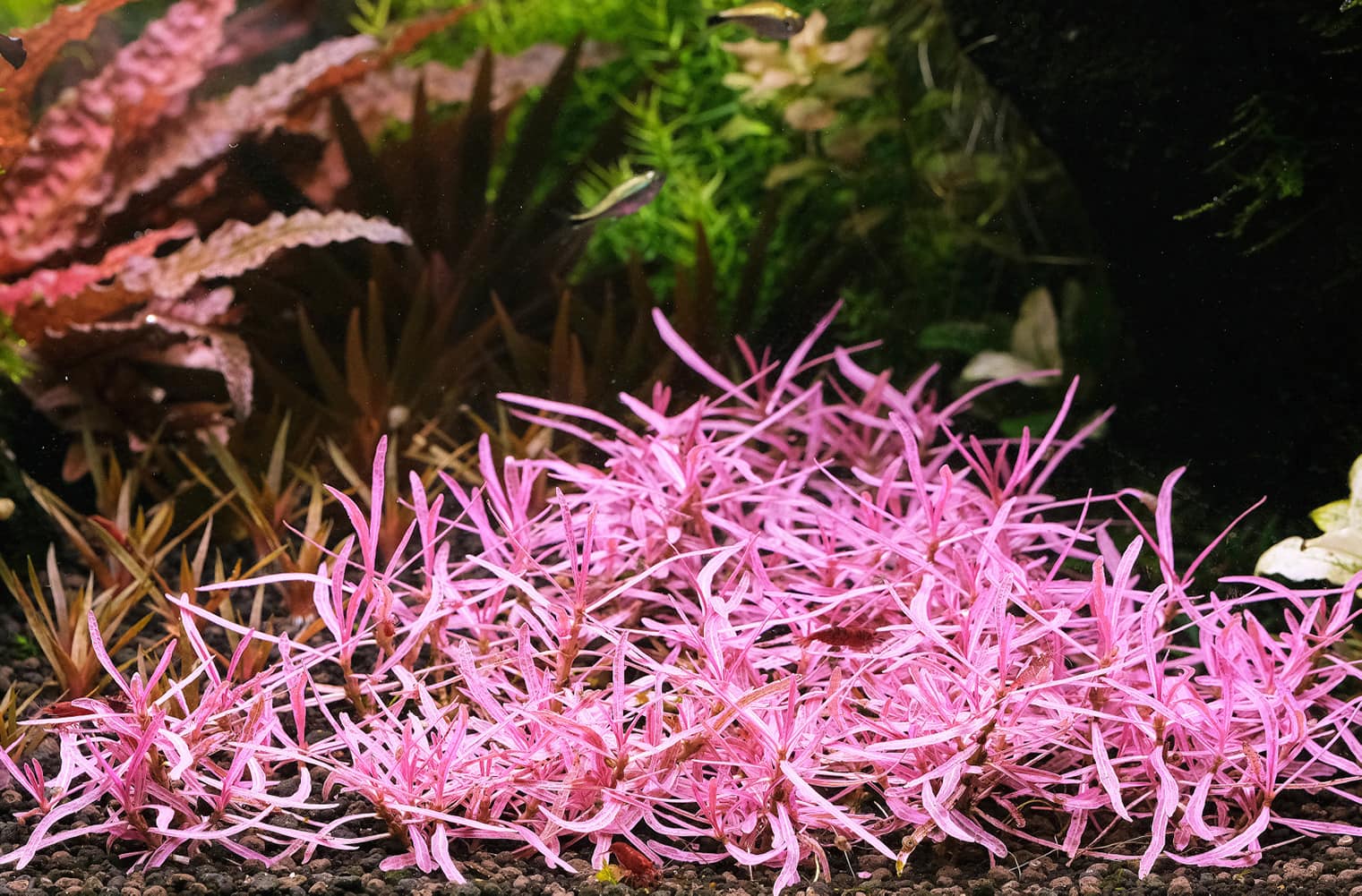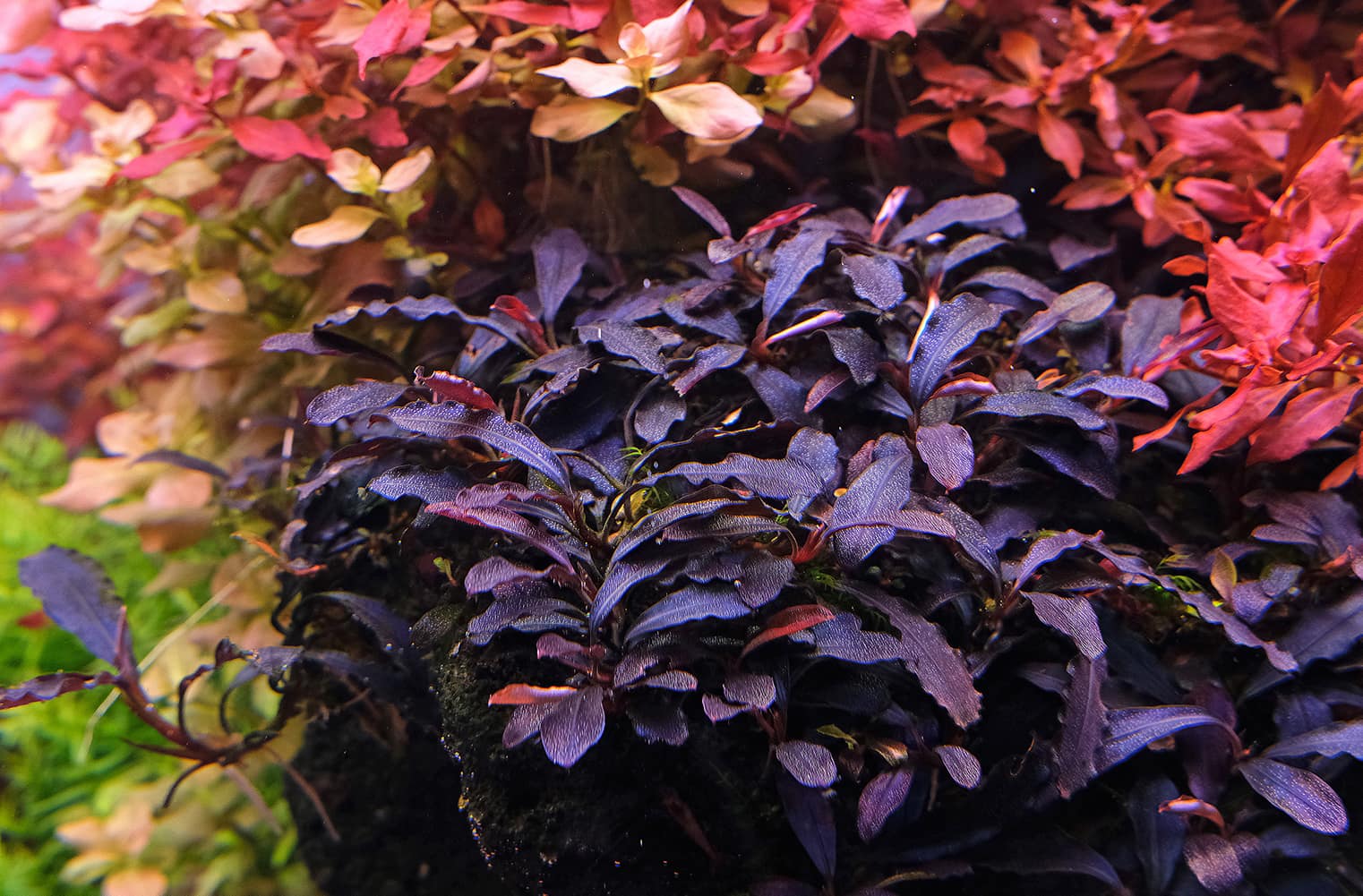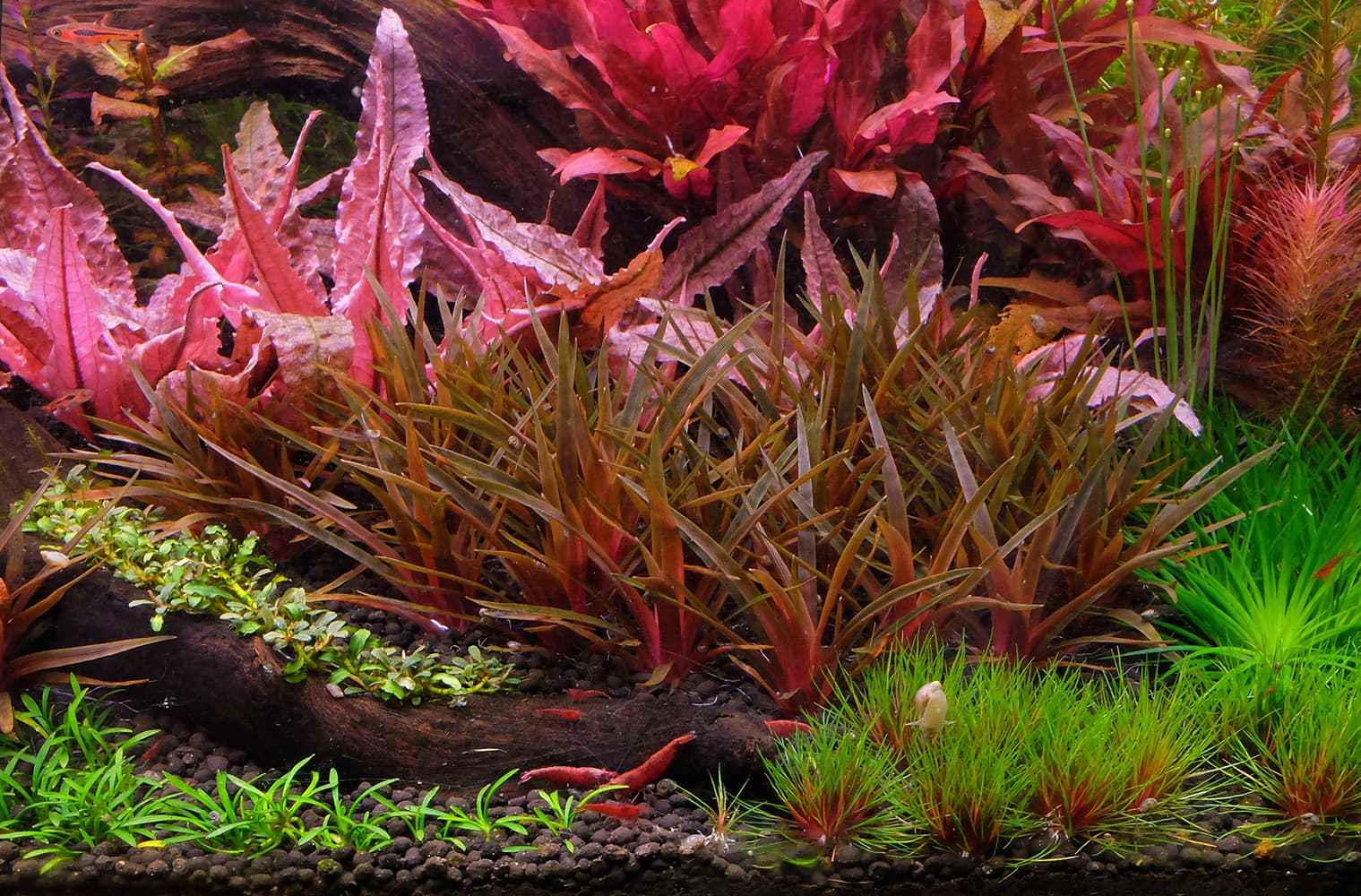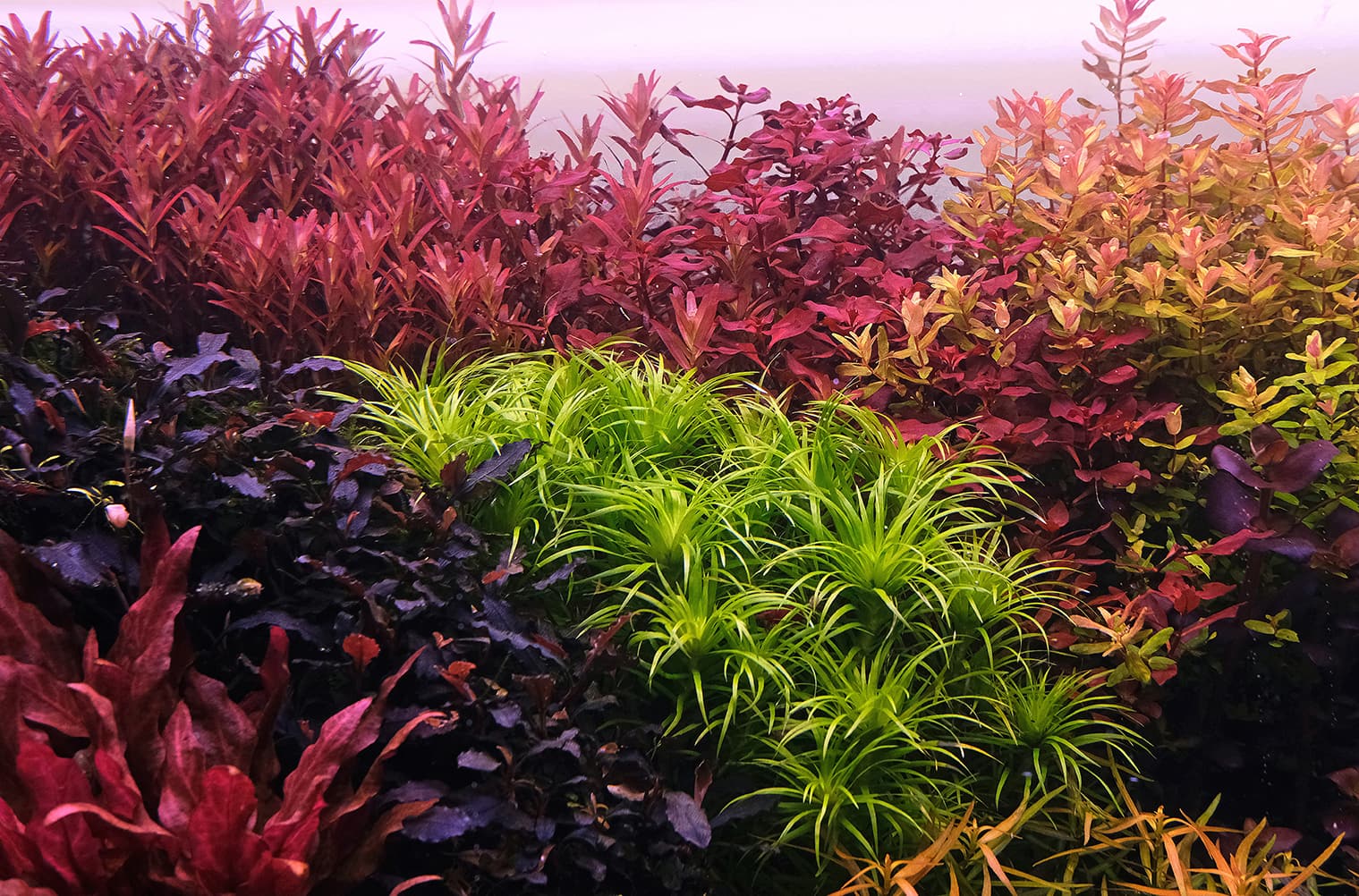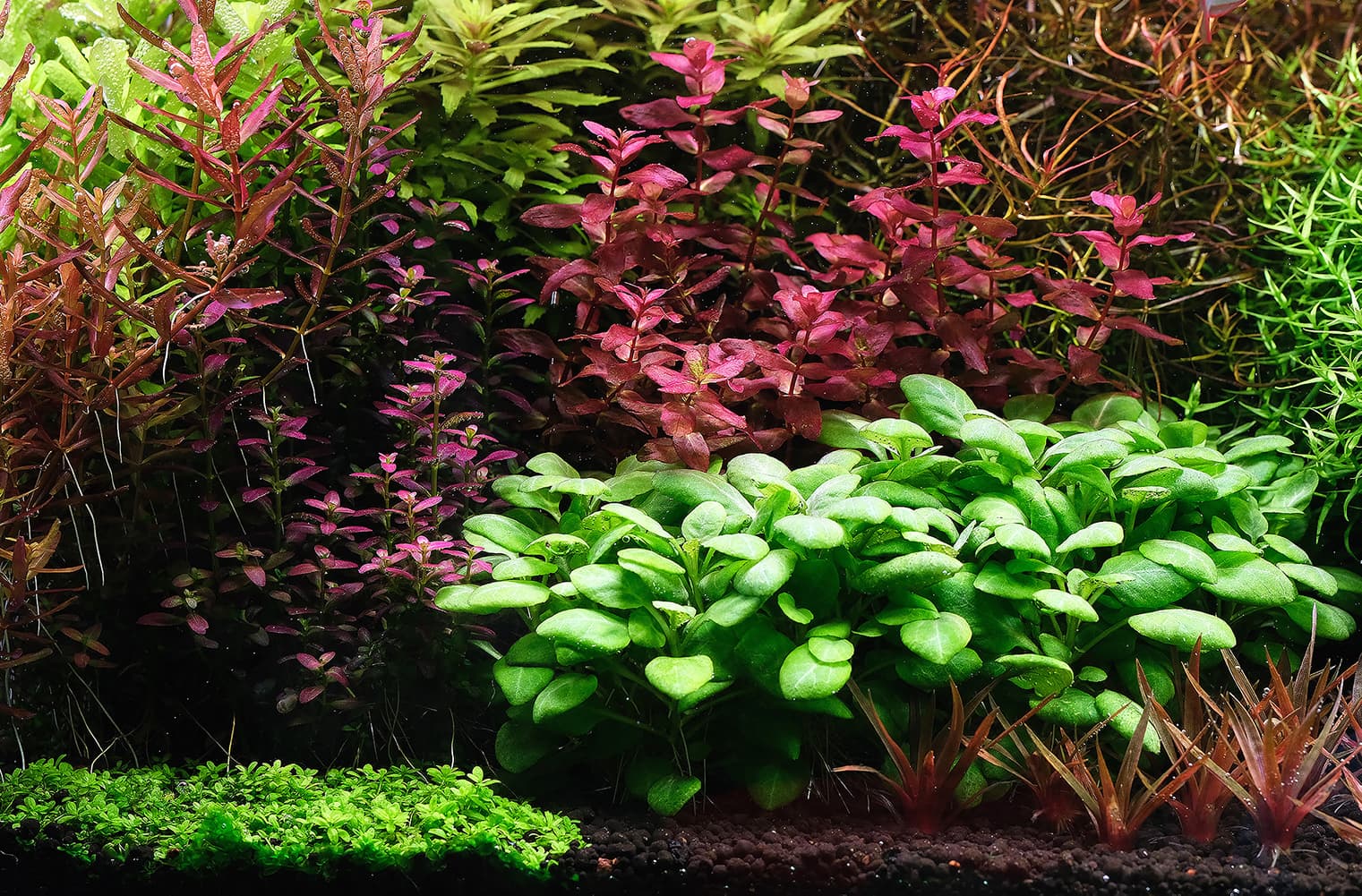Your Cart is Empty
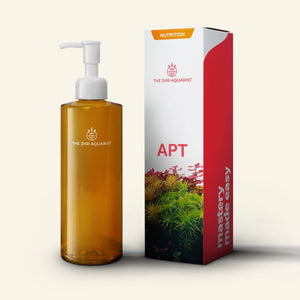
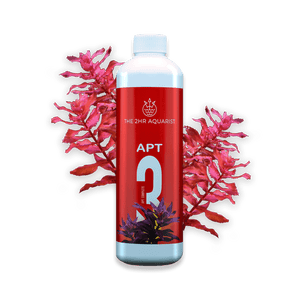
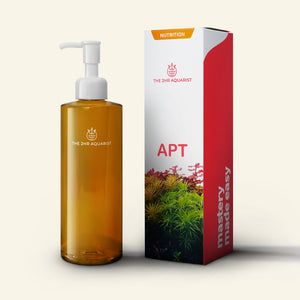
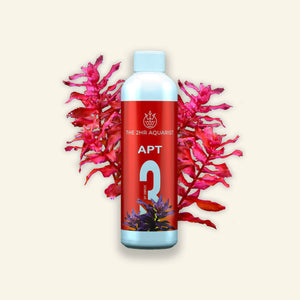
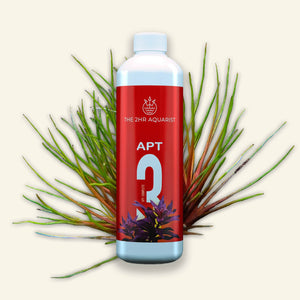
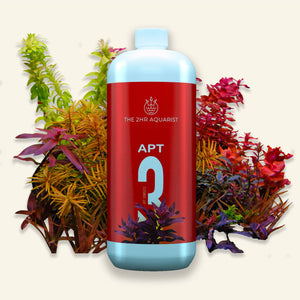
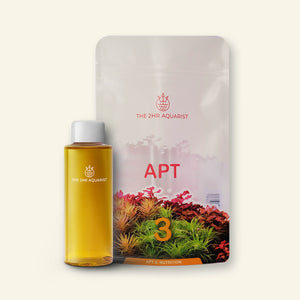
2Hr Aquarist APT 3
$11.80 - $50.90
Artful Intelligence.
Compared to conventional fertilisers (largely developed pre-2000s for 'fish tanks' with simpler / hardy plants):
3X more concentrated for demanding species*
2X more nitrate limiting for richer colours^
Dose 3ml per 100L daily.
#200ml
200ml lasts ~3mths for an 18 Gal / 70L tank. Pump not included.
#500ml
500ml lasts ~3mths for a 50 Gal / 190L tank. Pump not included.
#1000ml
1000ml lasts ~3mths for a 100 Gal / 380L tank. Pump not included.
#standard
Our Standard 300ml Pack comes with a calibrated pump. 1ml per press.
Lasts ~3mths for a 30 Gal / 115L tank.
#starter
Our Starter 100ml Pack comes with a calibrated dropper.
Lasts ~3mths for an 8 Gal / 30L tank.
Why
*in terms of total soluble elemental fertiliser per ml.
^in terms of the relative ratio of nitrogen vis a vis other nutrients per ml.
APT's concentrated yet calibrated Capstone Formula allows you to grow the hobby's most demanding plants, and also enjoy everyday magic in the simplest tank.
100% Comprehensive NPK, Macro, Micro & Trace elements.
FAQ Here.
Ingredients
APT 3 / Complete
Liquid inorganic macronutrient fertiliser
NPK (Mg) fertiliser with micronutrients and trace amounts of Boron (B), Copper (Cu), Manganese (Mn), Molybdenum (Mo) and Zinc (Zn).
0.7-0.9-7 (+1.6)
0.7% Total Nitrogen (N)
- 0.7% nitric nitrogen
0.9% Total Phosphorus pentoxide (P2O5)
7% Total Potassium oxide (K2O)
1.6% Magnesium oxide (MgO)
0.09% Total Iron chelated by EDTA, DTPA and EDDHA.
All nutrients are completely water soluble.
Ingredients:
Potassium sulphate (CMC1 CAS n°7778-80-5) Potassium chloride (CMC1 CAS n°7447-40-7) Magnesium nitrate (CMC1 CAS n°10377-60-3) Magnesium sulphate (CMC1 CAS n°7487-88-9) Potassium phosphate (CMC1 CAS n°7778-77-0)
Artful Intelligence
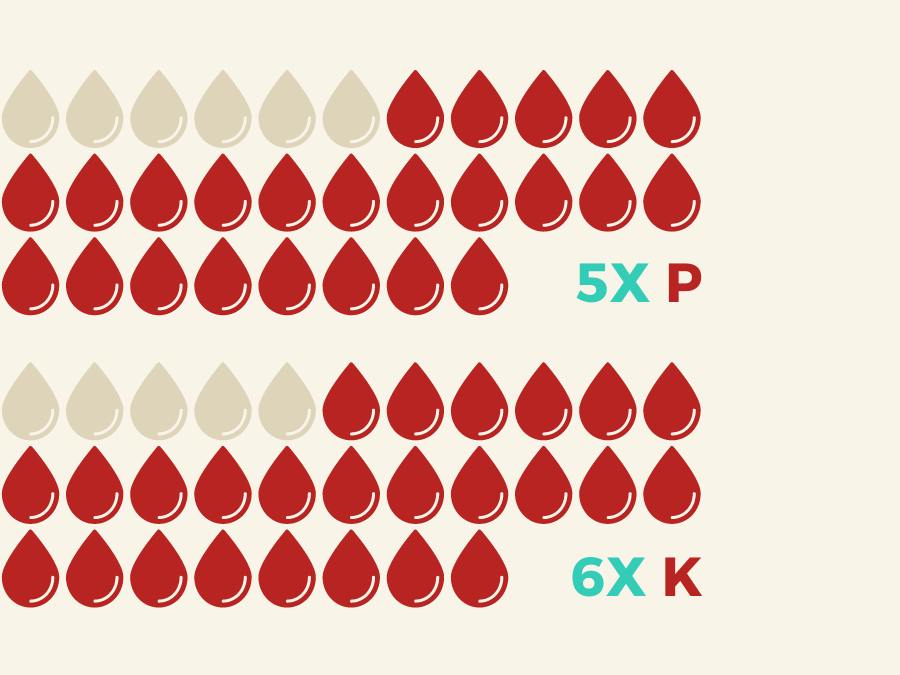
Power
Example of APT's relative concentration compared with a 50-year old European 'big brand fertiliser'. APT contains 5X the amount of Phosphorus (P) and 6X Potassium (K) per ml. That is like having 5 shots instead of 1 in your morning espresso, if you are into coffee :)
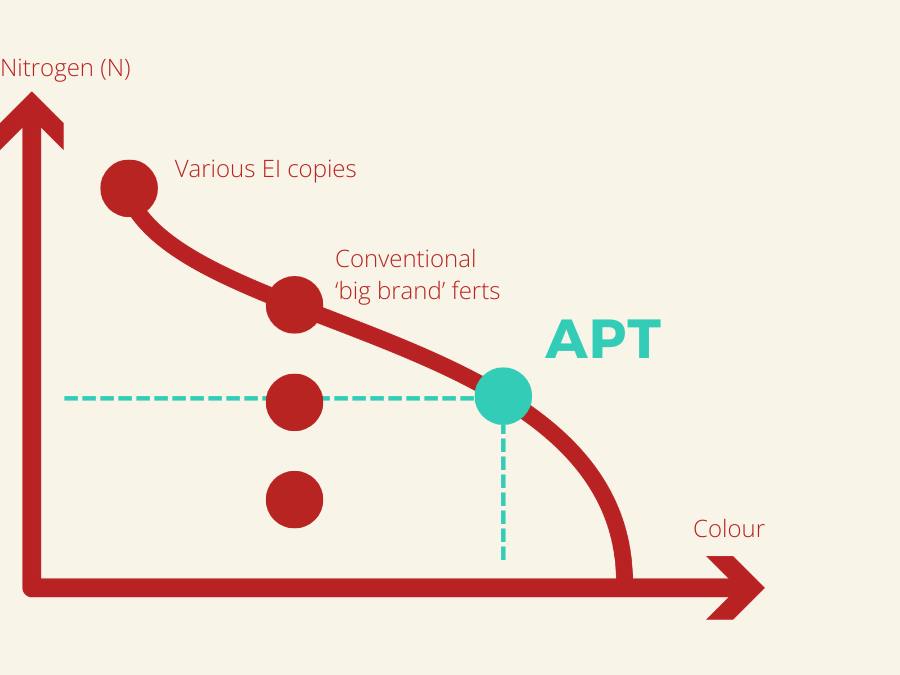
Balance
Simply 'more' is not necessarily better.
Lower Nitrogen (N) delays chlorophyll production and induces richer colours- to a point. Nitrogen is also critical for metabolism. APT pushes the boundaries of that trade-off. Maximum colour before diminishing returns.
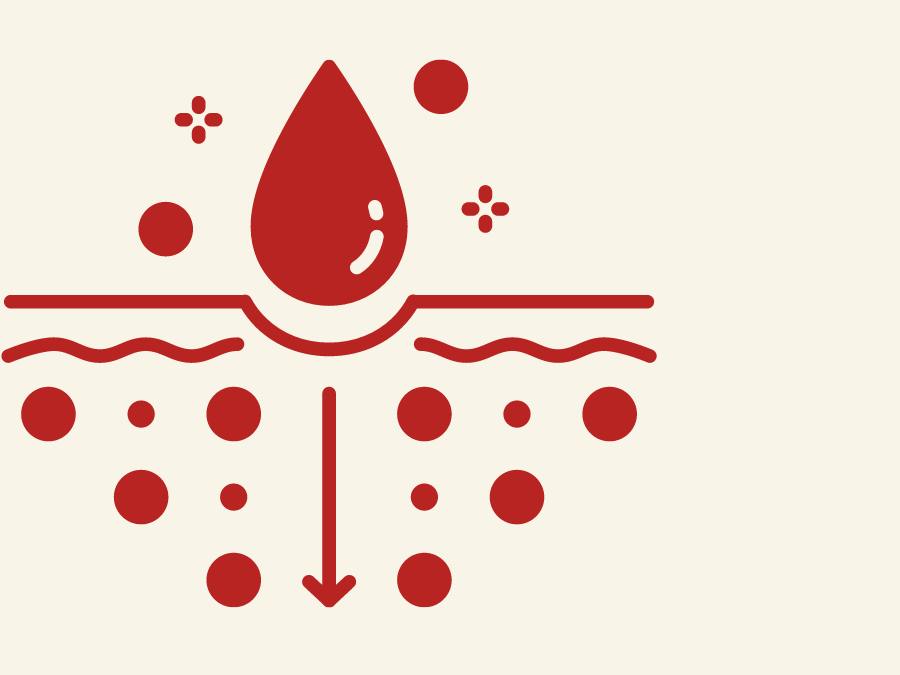
Form
Similar to food labels, "20% protein" or "1% Iron" tells little about actual absorbability, efficacy and impact. APT's components are up to 50X more absorbable, and accessible across a wider range of pH and other water parameters.
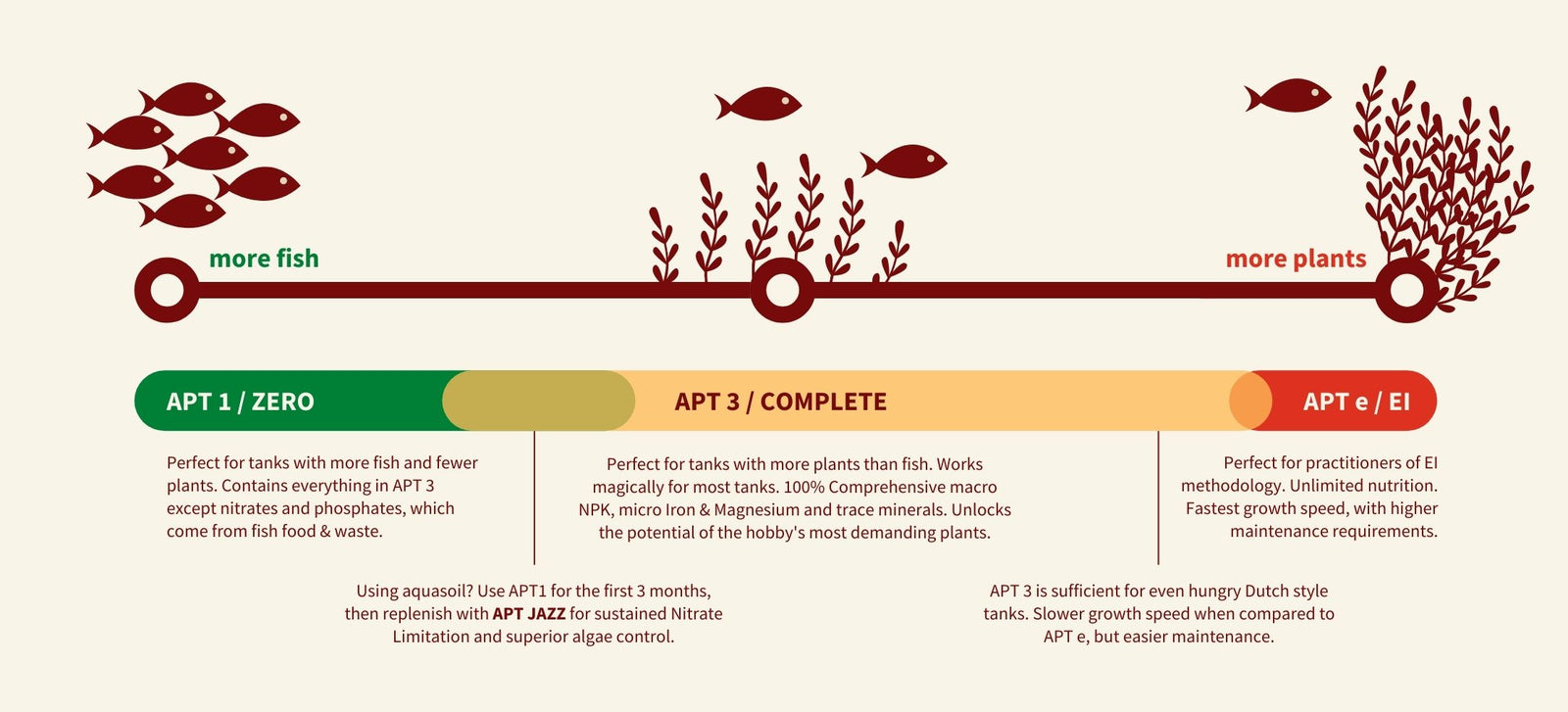
APT 1 is perfect for tanks with more fish, fewer plants. Also for new tanks (<3 months) with aquasoil. Enjoy comprehensive nutrition without nitrates and phosphates for maximum algae control.
APT 3 is perfect for tanks with more plants, fewer fish. Enjoy 100% comprehensive macro, micro and trace minerals. Unlocks the full potential of the hobby's most demanding plants.
APT e is perfect for heavily planted Dutch Style tanks and users who understand EI methodology. Supremely concentrated and expertly balanced.
When might APT not work?
In new tanks
It is normal for tanks less than 6 months old to have various bouts of algae issues, most of which can be avoided with proper cycling prior to planting. APT cannot compensate for inadequate cycling.
It is also normal for plants to take several weeks to adapt. APT helps to speed up the process, but you still need patience. In tanks without CO2, this takes 2-3 months. Adaptation may involve shedding leaves (yes!) and / or having leaves that appear deformed. The hardest, yet most effective response is to tinker less and provide a stable tank environment for the plants to adapt. Look for improvement in NEW LEAVES, not old ones.
In mature tanks
A mature tank can respond to better nutrition in several ways. The best (and most common) outcome is healthier NEW GROWTH. Old leaves do not rejuvenate even when conditions improve, and may even deteriorate faster, as we explain here.
In rare cases, better nutrition can seemingly trigger algae. This can happen:
(a) if there is prior accumulation of organic waste, especially on mosses and slow growers. When plants adjust to a new nutritional environment, they release proteins that serve as food for algae. The combination of accumulated organic waste + excreted proteins can be a trigger for algae.
(b) if volatile organic matter is released due to replanting or cleaning. In mature tanks, volatile organic matter builds up naturally in the substrate and hard-to-reach corners. When inadvertently released, often coincidentally with improved nutrition, algae can bloom. This can be avoided by performing thorough water change the 2Hr way after replanting / revamping the tank.
(c) if seemingly ‘OK’ plants (especially slow growers like Mosses, Bucephalandra, Crypts, Java Fern, Anubias, Alternanthera species etc.) are actually not as healthy as they appear. Plants often respond to improved tank conditions (better nutrition, or lighting, or CO2…) by accelerating the shedding of older, less healthy leaves. This attracts algae, which help in the decomposition process. Slow growers that are not healthy are especially hard to spot, as they can be in 'Zombie’ states for a long time, as we describe here.
(d) finally, if you are making a drastic change in dosing regime (e.g. very lean to something alot richer, or vice versa), this forces plants to reprogram their cells to adapt and this process almost certainly triggers algae. A gradual transition over 2-3 weeks often helps. But the longer slow-growers have adapted to a particular environment, the harder it is for them to 'switch'.
If you have a mature tank (> 1 year old) and are looking to improve plant health / growth, please check out this article.
dedicated to your success
Only APT comes with an integrated methodology and success-system used by thousands of aquarists across 20+ countries.

New Tank Journey | Ugly Duckling
New tanks can be frustrating at the beginning. Here, we describe one important signal that thi...

When Less is More
How to get Rotala rotundifolia redder? Interestingly, less can be more in this case.
Read More
Flowering Underwater?
Do aquatic plants flower underwater? Is flowering a sign of good health? Which plants can I grow ...
Read MoreAPT Toolkit
Grow anything, defeat algae, create amazing aquascapes








